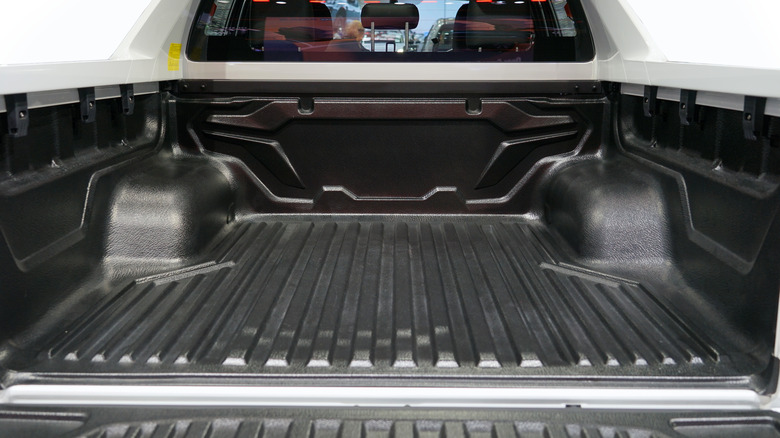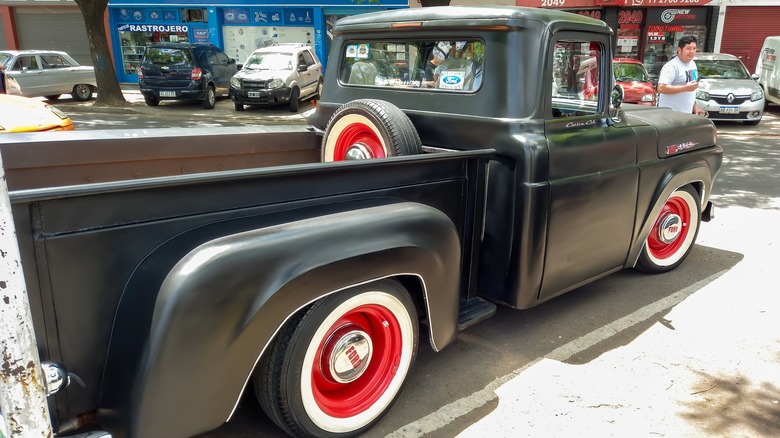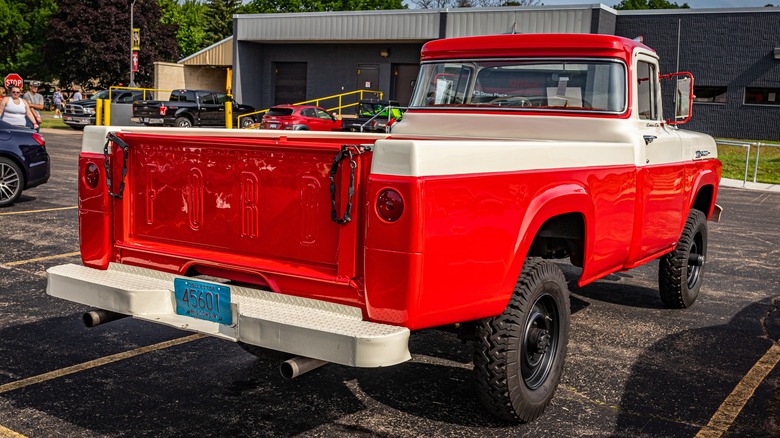Flareside Vs. Styleside: Truck Bed Styles, Compared
Pickup trucks have, understandably, undergone dramatic stylistic changes in the century-plus since they first took to the roadways of the world. After all, those first builds were essentially just Model T Fords whose rear seats had been replaced by a truck bed. Jump ahead a hundred years or so, and today's pickup trucks look more like tanks in comparison, with their bodies and engines built as much for traversing suburban landscapes as tackling tasks on the farm, at the work site, or any number of places in-between.
Evolution aside, pickup truck frames have remained, more or less, unchanged from bumper to bumper since the earliest days of production. There have, of course, been more than a few interesting innovations and deviations from the overall form over the years, particularly in regards to the look and design of a pickup truck bed. That's particularly true when it comes to the length and overall storage capacity of a pickup truck bed. When it comes to the latter factor, one particular design element has played an intriguing role.
If you've looked into buying a Ford pickup truck made before the 2000s or so, it's a design feature you may have taken keen notice of from one manufacturer to another, with some builds boasting a flareside bed and others utilizing a styleside design. Apart from boasting drastically different looks, each truck bed design indeed offers a different storage capability. Here's a look at what sets these distinct truck bed designs apart.
Flareside pickup truck beds
We'll start with flareside beds, which is a term traditionally applied to Ford pickup trucks fit with slim beds and fenders bulging out over the side, covering the tires. In other builds, like those from Chevrolet, this style is often referred to as "stepside," as many such models began to feature a small step in the space between the truck's cabin and flared fender that made it easier to step up and reach into the bed from the side. In any case, it was a style adopted by Ford and many manufacturers, starting largely in the 1940s and stretching off and on into the 2000s.
With the distinctive look helping rank some flaresides among Ford's best-looking trucks, the pickups were and have remained appealing for one other notable reason: the design allows for a uniform, rectangular truck bed that is ideal for storage purposes. That's because the flareside bed frames do not fit directly over the vehicle's tires, which in turn means you do not have to sacrifice bed space to accommodate for the rounded wheels as you would in most traditional pickup trucks.
The style was essentially standard for Ford and other manufacturers in the '50s, and it remained popular for several decades thereafter. As styles and consumer needs changed, demand for flareside trucks began to dwindle, with few automakers offering it as an option after the early 2000s. Given the scarcity of modern vehicles, if you're looking for a flareside truck, you'll likely need to scour the used or even classic truck market to find one.
Styleside pickup truck beds
Though flareside pickup trucks offer the advantage of a bed fit with 90-degree angles on all sides, those beds are traditionally not as wide as what you'll find in Ford's so-called styleside builds. The manufacturer debuted the redesigned pickups — whose beds are typically as wide as the truck's cabin and feature a flat side with only the slightest visible flare in the fender — in 1957, with Chevy adopting the same aesthetic with their "fleetside" builds.
As anyone who's purchased a truck after the styleside debuted no doubt knows, the design quickly became preferred by consumers. That was, in large part, due to the fact that the beds were noticeably wider than their flareside counterparts, as they fit true the width of a truck's cabin. Of course, the rub is that the styleside frames are designed to fit over a truck's rear wheels, which protrude up into the bed of the vehicle on either side. That protrusion not only means you're sacrificing a little space, but it creates a sort of bottleneck right in the middle of a pickup truck's bed, which can sometimes make it harder to lay certain wider items flat on the bed's floor.
Nonetheless, the added width still gives many styleside trucks a storage advantage over those in the flareside style. As such, Ford and other automakers have continued to build the bulk of their truck fleets in the styleside fashion in the ensuing decades and will no doubt continue to do so for many decades to come.


